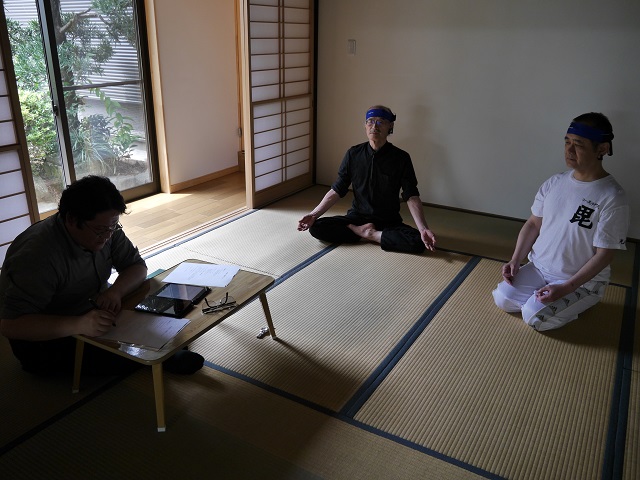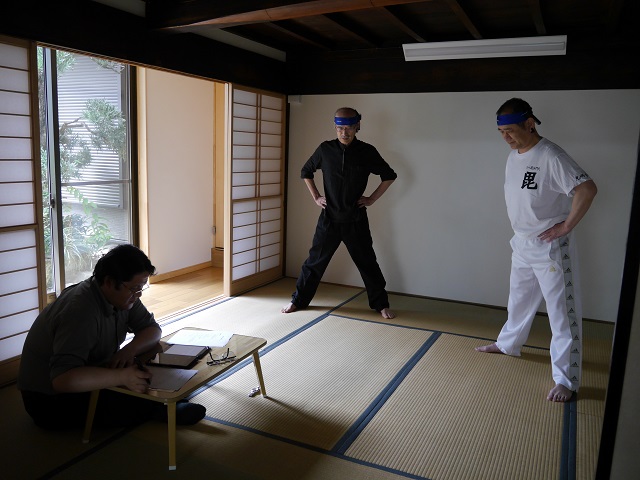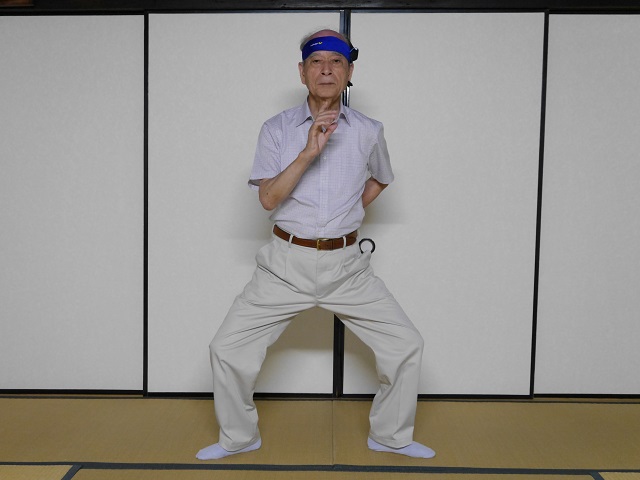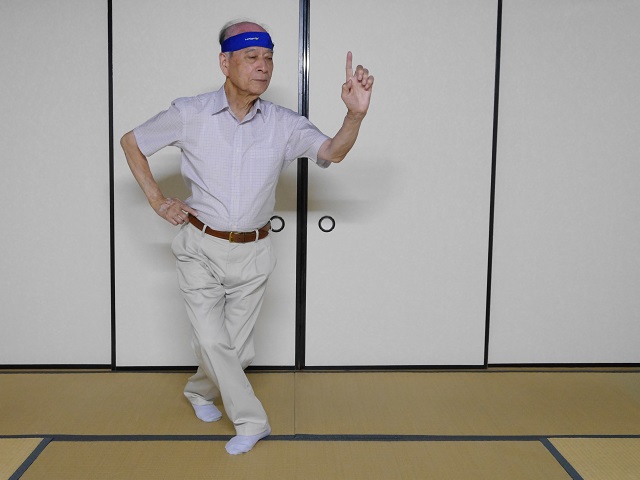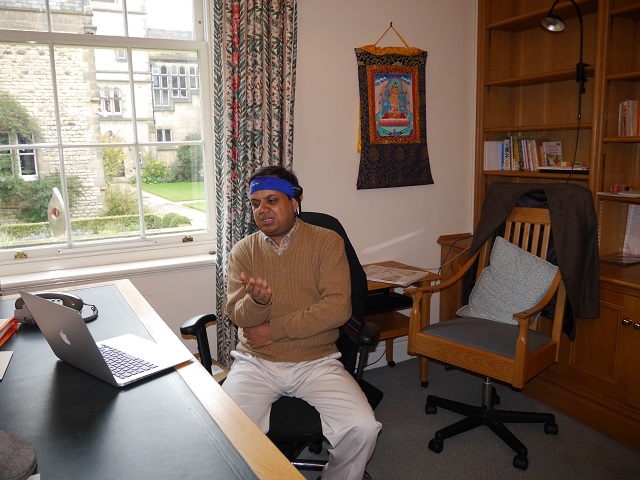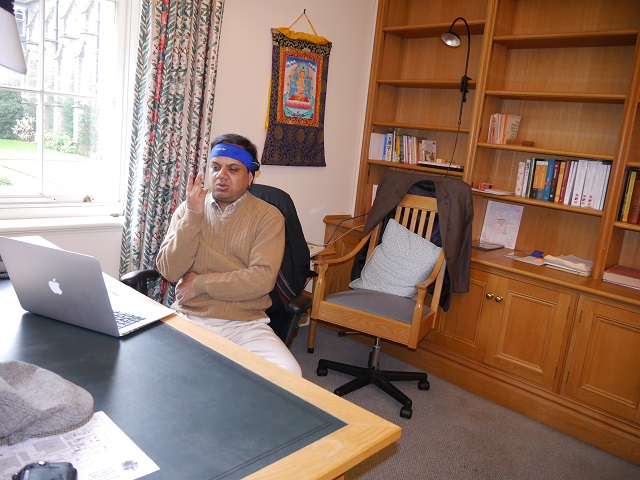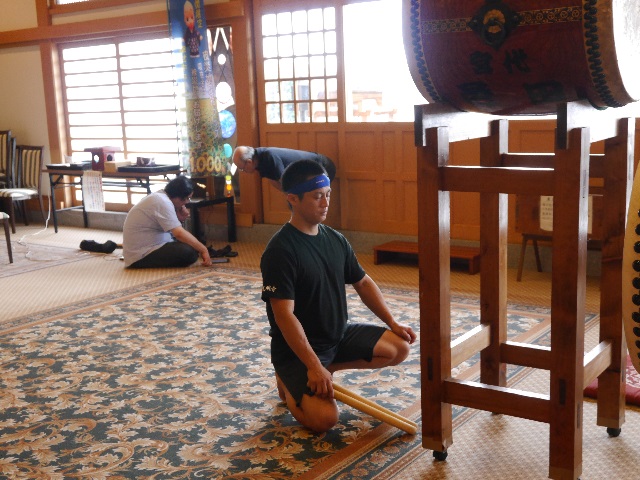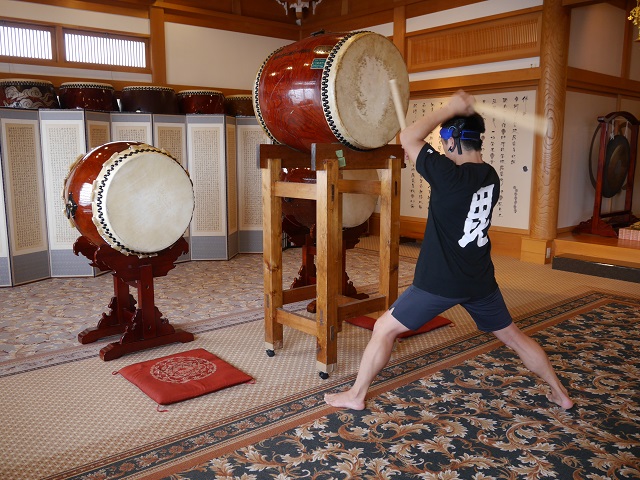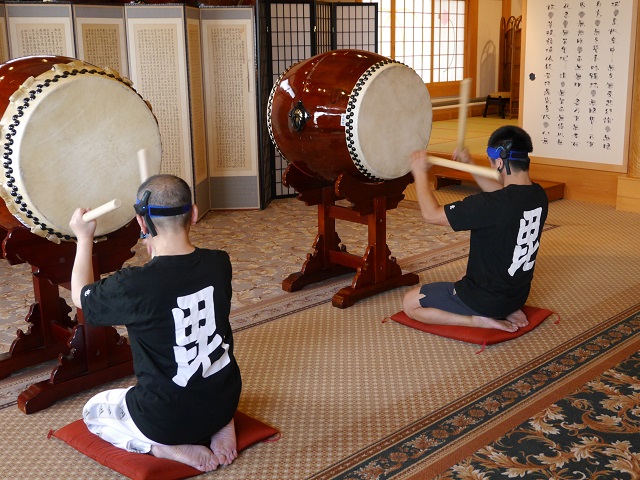Yoga Practice (Yogācāra)
Traditional Indian yoga is practised on the basis of a system of poses reconstructed and revived for the present day by Tsuruji Sahoda, Hiroshi Motoyama, and others on the basis of Indian texts such as the Yoga-sūtra and Gheranda-saṃhitā. A breathing technique that can be practised for thirty minutes has been developed from the practices of this traditional Hatha Yoga, to which has been added a "serotonin breathing technique" advocated by Dr. Hideho Arita. Whereas yoga is usually practiced with the eyes closed, we practise it with the eyes open. Brain waves and the electric potential of the meridians are measured regularly, and these practices are analyzed on the basis of this data.
Qigong
The aim of this qigong study group is to collect and study data on brain waves, etc., under the guidance of Yoshisuke Nishina (see photographs), director of the One-Finger Zen Qigong Study Group of Japan. It is recorded that Bodhidharma, who transmitted meditation methods from India to China, sat meditating for nine years facing a wall in a cave near Shaolin Temple, and subsequently his disciple Huike consolidated Chinese martial arts to create a distinctive method of practice known as the "One-Finger Zen method", from which One-Finger Zen Qigong is said to have derived. The dissemination of One-Finger Zen Qigong in Japan began when Master Que Ashui, affiliated to Southern Shaolin Temple, returned to secular life in 1987 in order to spread this technique among the general public, whereafter his disciple Huang Renzhong popularized it still further, and Qin Yusheng began to hold courses at the Qigong Association of Japan. For more information, please visit websites related to One-Finger Zen Qigong.
Sūtra Recitation
The original Sanskrit texts of the Heart Sutra and other Buddhist works are recited in accordance with traditional Indian methods of recitation. As well, brain waves and meridians are measured, and this scientific data is used for research purposes. The photographs show Professor Diwakar Acharya of Oxford University having his brain waves measured while reciting a Sanskrit text in his office at All Souls College.
Drum Playing
We study the state of mind that arises when playing Japanese-style drums, measuring brain waves and meridians and using this scientific data for research purposes. The photographs are from a 20-minute solo performance by Makoto Tashiro, a member of the Eitetsu Fūun no Kai, a drum collective made up of skilled young performers from around Japan drawn to the music of drum virtuoso Eitetsu Hayashi, and from a joint performance with head researcher Sakuma. On both occasions the players' brain waves were measured.

